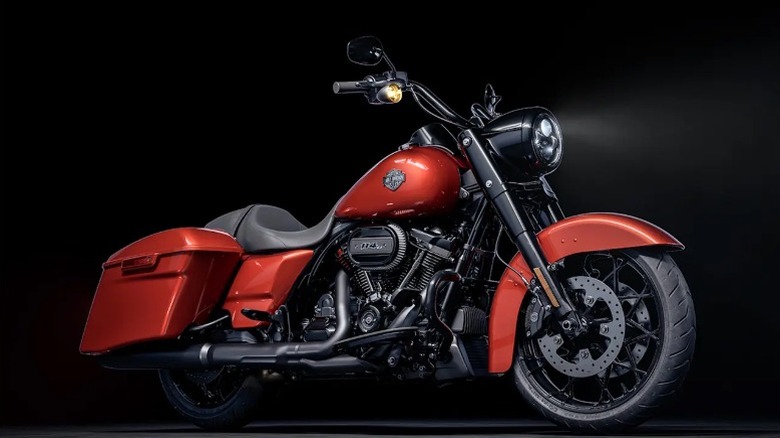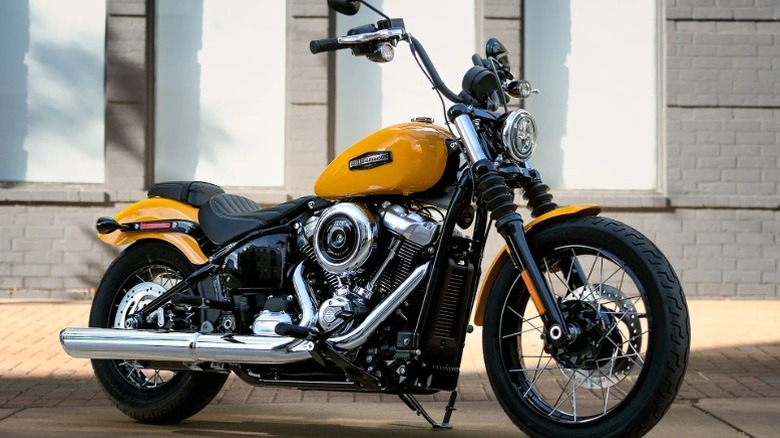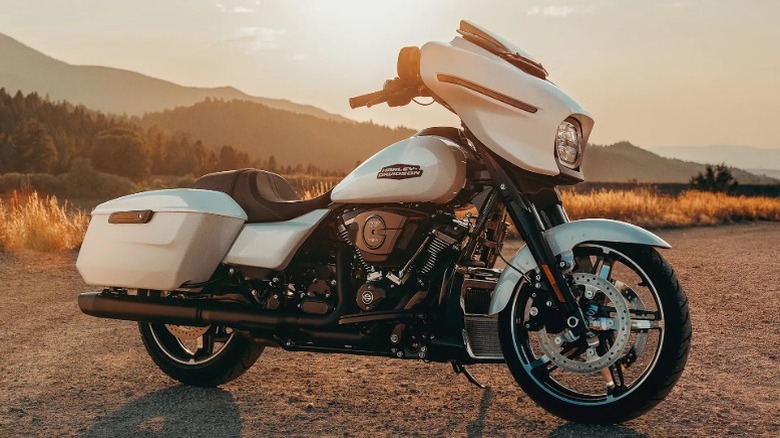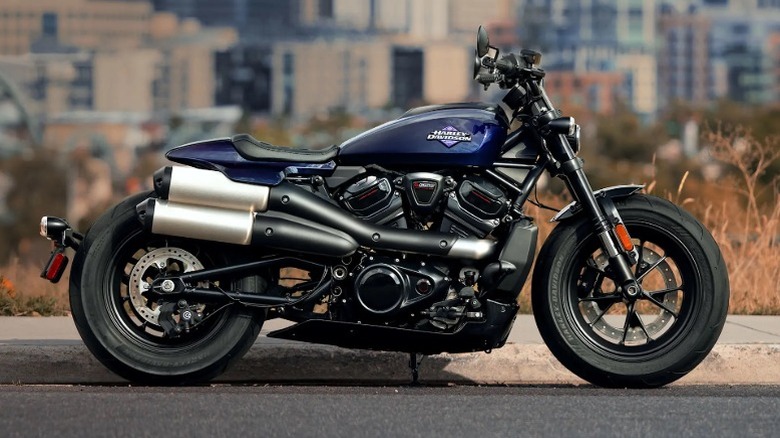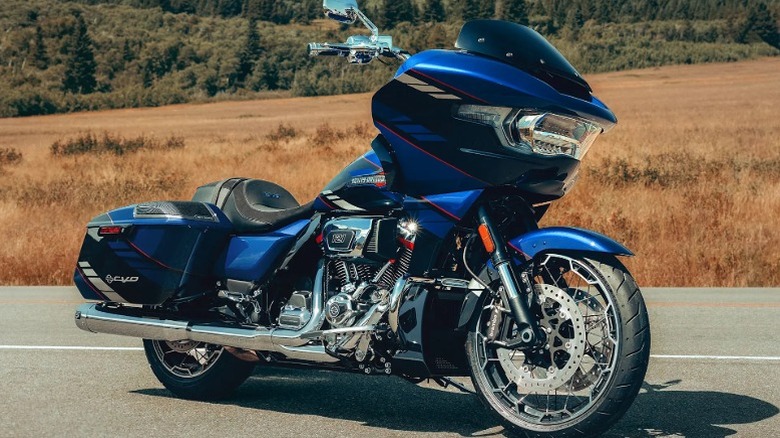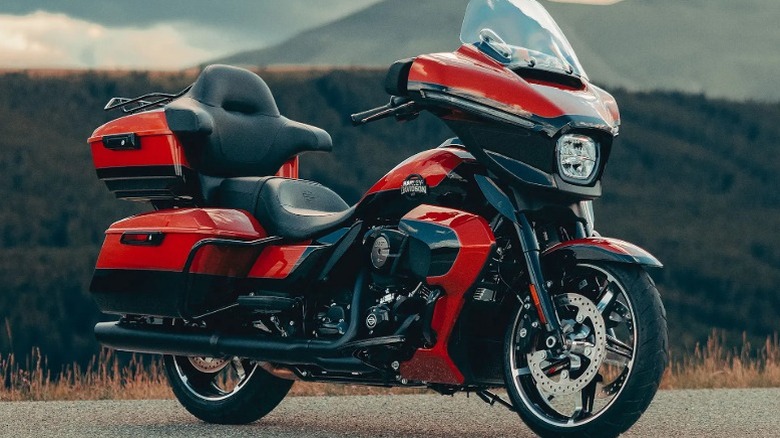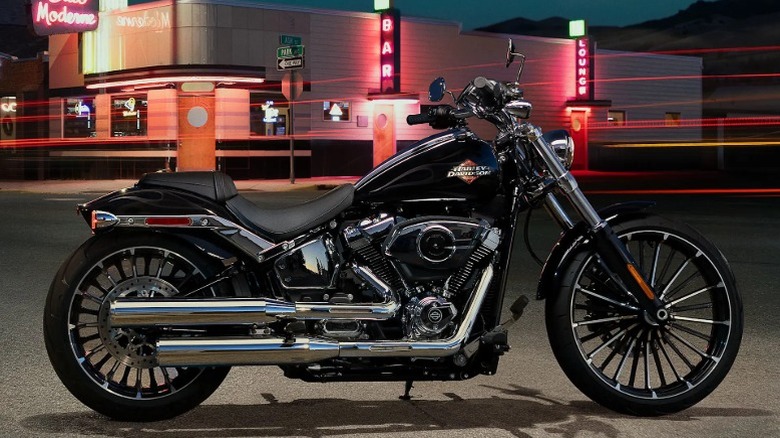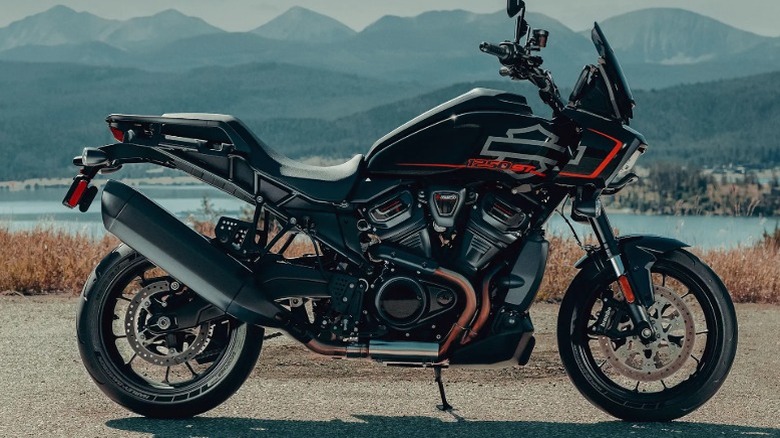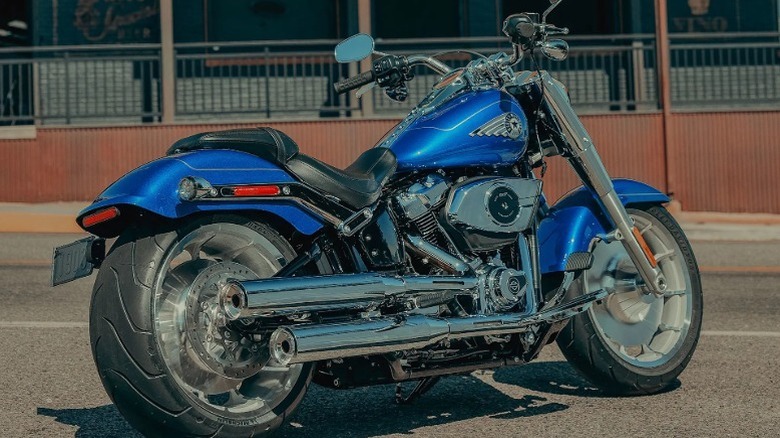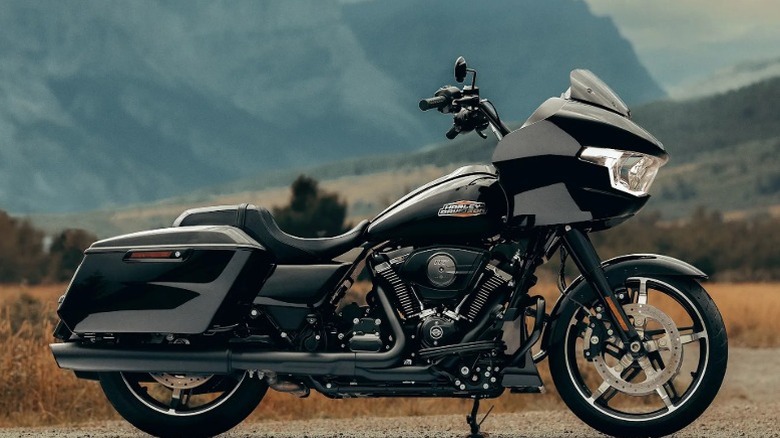10 Of The Biggest Harley-Davidson Recalls In Recent History
With a history spanning over a century, Harley-Davidson is a household name in motorcycle manufacturing. This American manufacturer has made some of the most reliable motorcycles ever built in the U.S., and while its domestic influence appears to be declining, its global market share has only continued to grow.
However, even though it's made a ton of very successful bike models, this company is not above mistakes. In recent years, Harley-Davidson has had its fair share of instances where it has had to recall motorcycles or motorcycle accessories due to various kinds of defects.
With issues ranging from brake and clutch problems, to even headlight failure, the company has undergone some massive recalls involving sometimes hundreds of thousands of units. We compiled and highlighted some of these events, as documented by the National Highway Traffic Administration (NHTSA) and Harley-Davidson. Here are 10 of the biggest Harley-Davidson recalls in recent history.
2015 saddlebag recall — 185,000
The biggest Harley-Davidson recall of 2015 was prompted by a saddlebag issue affecting certain motorcycle models. The saddle bag, which attaches below the motorcycle seat, is convenient to have during a ride. Having it fall off abruptly mid-ride definitely isn't what many Harley-Davidson owners have in mind.
The company investigated this issue in January 2015 due to an increase in warranty claims about the defect. It soon discovered that the saddlebag mounting receptacle was faulty. In particular, a spring wire within the receptacle sometimes didn't provide enough tension to hold the bag securely, causing it to fall off.
Affected models were some 2014 and 2015 Touring model motorcycles, including the Road King, Police Electra Glide, and Street Glide, specifically those manufactured between May 3, 2013, and May 26, 2015, in the U.S. In Brazil, models made from July 2013 to June 2015 were affected. In total, the number of models involved in this July 2015 recall amounted to more than 185,000 units.
2017 oil line clamp installation error recall — 46,000
Even some of the best Harley-Davidson motorcycles are notorious for their oil leakages, and this flaw only proved that notoriety warranted. In May 2017, the clamps on oil cooler lines in a number of models were found to have been improperly installed, prompting the company to issue a recall of about 46,000 motorcycles.
The result of the improper installation was that the oil line could detach, spilling engine oil in front of the rear tire. What would likely follow this is losing control of the motorcycle and crashing. In the NHTSA report, only nine incidents were discovered, two of which caused a crash and one of which involved some injuries to the rider, but nothing severe.
The only solution offered was to examine the affected component, and if found to be faulty, a free repair was issued. According to the NHTSA report, no reimbursement was made. A total of 10 different 2017 models, including the Road Glide, Street Glide, Road King, and Police Road King, among others, were involved in this program.
Brake failure recall in 2018 — 175,000
Close to 175,000 motorcycles were involved in a major Harley-Davidson recall in January 2018, based on complaints about the anti-lock brake (ABS) system — that is, the part of your motorcycle that prevents the wheels from locking up when there's a sudden stop.
This defect was found in several VRSC, Touring, and CVO Touring Harley-Davidson motorcycle models, including the Night Rod Special, Road King Police, and Electra Glide Classic, particularly those produced between 2008 and 2011. The National Highway Traffic Administration (NHTSA) had earlier determined, upon investigation of some 43 complaints involving a few crashes, that a nationwide recall was necessary.
In its notice, Harley-Davidson attributed the issue to the brake fluids riders use in their bikes, stating that users who failed to carry out the recommended biennial maintenance were likely to have deposits in their brake system. This deposit, caused by the DOT 4 brake fluid accumulating moisture, rendered the brakes ineffective in affected models. Thus, as a remedy, owners were urged to contact a company dealer and have their brake fluid flushed free of charge.
2018 clutch system recall — 238,300
Another major recall happened in 2018, this time in October. The event was fueled by reports that some Harley-Davidson motorcycle clutches had certain defects that prevented them from disengaging. The identified models were the Touring, CVO Touring, and Trike models of 2017 and 2018, as well as the 2017 Softail bikes.
According to the NHTSA report, the secondary clutch actuator in the hydraulic clutch system in many motorcycles could suffer a leak issue. Such a leak could over time cause an excessive loss of fluid, allowing air to enter the system and thereby affecting the operation of the clutch system.
Those potentially affected were asked to contact a dealer who would confirm if their vehicle was part of the recall, in which case, a new secondary actuator piston assembly was to be installed. Globally, about 238,300 models were affected, 177,636 of which were in the U.S. This became the company's fourth clutch-related recall in five years. Only two years prior, a clutch problem had led to the recall of 27,232 motorcycles.
2019 brake failure — 44,000
The Street 500 and Street 750 were once some of Harley-Davidson's best entry-level bike models. Before their discontinuation in 2021, they were the best options for beginners and also the cheapest street bikes offered by the brand. In 2019, however, a brake issue in a number of models was discovered, which made them susceptible to accidents, compelling the company to issue a worldwide recall.
This event was a pretty bad look for the American manufacturer. It had already issued a brake failure recall in January 2018, only to have another set of motorcycles deal with brake failure about a year later. The culprit this time was the brake caliper piston bore, which was likely to corrode when exposed to environmental elements like road salt or moisture. This corrosion contributed to brake drag, which in turn increased the risk of a crash. At the time of the recall, four crashes had been confirmed.
Harley-Davidson temporarily halted the sale of street bikes and carried out replacements for affected models. This amounted to 12,800 units in the U.S., and close to 44,000 worldwide.
2021 headlight failure recall — 31,000
A faulty headlight might not seem like a huge defect at first, but when you take your motorcycle on the road, it becomes a major safety hazard. Because of this problem, Harley-Davidson initiated a recall in March 2021 involving more than 31,000 vehicles.
The company probably expected the glossy chrome finish in the headlamp assembly to be more of an aesthetic concept than a headache. However, in affected models, it reflected more heat than anticipated, creating a hole in the tip of the dual-filament bulb. This then resulted in gas escaping from the bulb, and cause complete headlight failure.
The defect came with some 2019-2021 Sportster (XL) motorcycles. However, the headlamps were also sold as replacement parts for older Sportster models, 2005-2017 Softail and Dyna models, and 2005-2011 V-Rod models, making them subject to the recall as well. Owners were notified of the recall, and a new headlamp bulb shield was installed in these motorcycles, this time around, with a matte inner surface finish to avoid a recurrence.
2022 unintended brake light illumination — 200,000
October 2022 saw another major recall for Harley-Davidson thanks to a software problem. The company discovered that the brake lights in a number of Touring, CVO Touring, and CVO Trike motorcycles would illuminate whether or not the rider applied the brakes. A recall was necessary as this could obviously confuse other motorists or riders and lead to a rear-end collision. In addition, it's a violation of the Federal Motor Vehicle Safety Standards No. 108: Lamps, Reflective Devices, and Associated Equipment.
This issue actually came to the attention of the company in June 2021. However, the company closed the investigation about four months later based on its discovery and due to the low frequency of reports. But with increased complaints, the investigation became active once again in 2022, and Harley-Davidson's Executive Decision Authority (EDA) finally approved a voluntary recall.
The owners were urged to go to their dealers for a software update to fix this problem. This worked great for Touring and CVO Touring motorcycles. But for Trike and CVO Trike bikes, dealers also had to install a new pressure switch.
2023 rear shock absorber fasteners — 65,000
Shock absorber fasteners are crucial for keeping your vehicle's shock absorber secure. So when Harley-Davidson discovered that in many of its motorcycles, the component was susceptible to breaking inadvertently, it issued a recall. In this instance, the faulty rear fastener could cause the shock absorber to come in contact with the rear tire, which could lead to a loss of pressure over time and make handling the motorcycle difficult.
The recall was filed in August 2023, but it involved models produced as far back as 2018. It affected a number of Softail motorcycles, but only those that came with a particular style of rear shock adjuster. Models affected included the 2018-2019 FLDE, 2020-2023 FXLRS, 2018-2023 FLHCS, and 2022 FXRST. Although this constituted only about 1% of total units, the total number recalled added up to 65,224 motorcycles. Some accessory rear suspension kits made within that period also had the same issue. However, a separate recall was made for those, involving about 1,282 units.
2024 wire safety issues — 47,000
Harley-Davidson had already been receiving a lot of backlash in August 2024 due to some of its policies. September was followed by even more bad press for the company, as it had to issue its biggest recall of 2024, courtesy of faulty wiring in some of its bikes.
According to the National Highway Traffic and Safety Administration report, the regulator output wire was built in a way that it would rub against the front corner of the engine crankcase, wearing down the wire insulation. The exposure of the wire made it susceptible to an electrical short circuit that could lead to a loss of power in the electrical system and potentially cause a crash.
The company, in its recall, conducted a free repair of the regulator output wire harness for motorcycles that were affected and also fixed a secondary retention strap to help keep the wire in place. Only 2024 models were affected, including the 2024 FLHX, FLHXSE, FLTRX, FLTRXSE, and FLTRXSTSE motorcycles. Still, affected units came up to 46,923. Harley-Davidson began shipping the recall kits in October 2024.
2024 brake line recall — 15,778
Harley-Davidson again opened the curtains for another recall, only a few weeks after the one affecting its regulator wires. This time, the culprit was a brake line defect that was found to have affected close to 16,000 motorcycles. Of the total recall units, 739 were 2022 FXRST motorcycles, while 2022-2024 FXLRST models took the bulk of the defect, with 15,039 units.
The reason for the issue was that the protective coating on brake lines was wearing off from constantly making contact with the fuel tank, and this, in some cases, could cause the brake fluid to leak. The investigation revealed that this problem likely resulted from the front-line brakes being improperly bent during assembly.
While this issue could affect the brake function and lead to a crash, there were actually no reported accidents at the time of recall. However, a couple of field reports and life tests were conducted during the investigation that prompted the recall.

